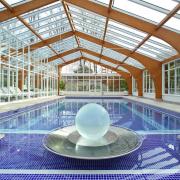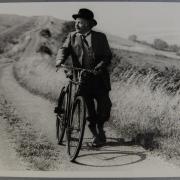Many of us spend a large proportion of our work life or leisure time sitting on our backsides, but are you aware of the negative impact this has on your health and wellbeing?

There's no point investing time and effort into beating the rat race and working towards financial independence or retirement if it's at the expense of your own health. As anyone who has experienced health issues will know it's the single most important aspect of your life and should be prioritised as such. Once lost, everything else is irrelevant.
According to an American Cancer Society study, if you sit for six hours a day or more your risk of dying early jumps 19%, compared with people who sit fewer than three hours, that's pretty shocking. Despite the medical community not currently recognising 'Sitting Disease' as a diagnosable condition, there are no doubts about the negative knock-on effects of an overly sedentary lifestyle.

Combine this lack of basic exercise with a poor diet and I'm sure that in future years this era will be seen as a blip in Homo sapiens development. The human body was designed for hunting and travelling long distances efficiently; we can outrun almost any animal - but not after sitting in a hunched position for 40+ hours a week. However, that is how most of us makes a living, and spend our leisure time. These days manual labour and active jobs 'on your feet' tend to be the exception not the rule.
Lower back pain (LBP) affects 540 million people globally and is the main cause of disability worldwide. LBP is estimated to cost the UK £12.3 billion annually - but what can we do about it? This is where I should introduce you to my wife Natasha, as this is one of her areas of expertise. Natasha is a Body Control Pilates instructor and a back4good practitioner at Dynamic Health, so back issues caused by desk work is something she sees a lot.

_____________
Natasha's Tips for better Back Health
For long-term back health we need to keep moving and build up core strength. Gone are the days when you were told to rest up in bed with a bad back. This simply becomes a vicious circle of weight gain and more back problems. As we get older, keeping moving is key to good health - it really is a case of 'use it or lose it'. Used correctly our core can carry a great deal of the load that most of us rely on our backs for.
Most of us will experience back pain at some point and it is a recurring problem. It is therefore essential to make core strengthening exercises a part of your daily routine that continue even when you feel pain-free, as a strong core will help prevent it happening again.
I take a detailed history of clients with back pain and look at what we call the bio-psycho-social model - that is, the person as whole. What else is going on in your life, and how do you perceive your pain? By finding the weak points and the immobile joints, we can start to get your spine moving correctly and build up core strength which adds stability to your spine. It's a little like building scaffolding around the joints of the spine.
3 daily exercises to build core strength
Here are my top three maintenance exercises for building up core strength.
If you lead a mainly sedentary lifestyle, with a lot of your time sitting at a desk, then make these simple exercises part of your everyday routine. When doing these exercises, try to breathe fully outwards into your ribcage, exhaling to move and inhaling to return to the start position.
Heel slides
Lie on your back with a pillow under your head, bent legs and feet flat on the floor with knees and feet hip width apart. There should be a small gap under your lower back. Put your hands on your pelvis to check for movement, pull your tummy button in and up and as you slide one leg away from you and then slide it back. Repeat x3 each side.
Rib cage Closure
Starting in the same lying down position as in Heel Slides, lift both arms up to the ceiling and then take them behind you. Only go as far as you can stay in neutral with your spine - pull your tummy button in and up to ensure you don't increase the curve in your lower back, or allow your lower ribs to lift.
Tabletop
On your hands and knees, with your spine in 'neutral' (the same shape it was when you were lying on your back), lift your tummy button in and up and slide your right foot away without dropping or lifting your pelvis, then slide it back in, repeat x 3 each side. You can advance this by lifting the opposite arm away to the leg you are working.



























